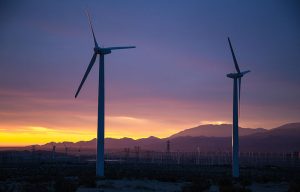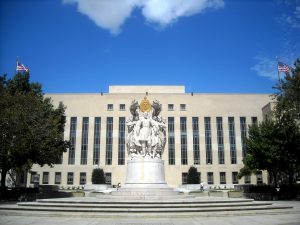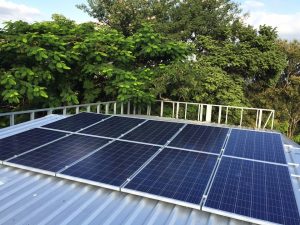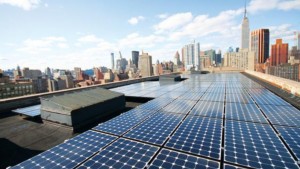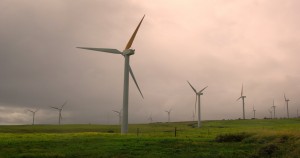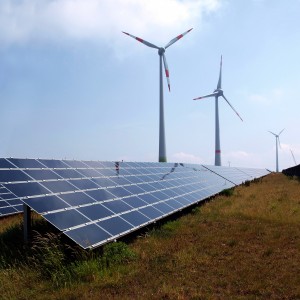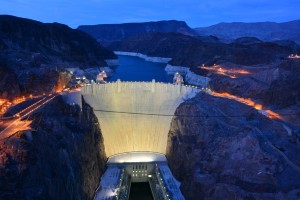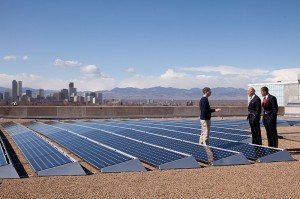59 item(s) were returned.
Director, New York Clean Energy
Environmental Defense Fund
While it is clear that energy and the environment did not play a decisive role in the election, 2017 will nevertheless bring a new set of challenges for energy policy, and elevate the conversation to a higher level. At the federal level, the fight to stop climate change looks bleak. State Environmental Commitments and clear, deliberate leadership at the state and local levels will become essential to advance clean energy goals. Fortunately, New York’s history of advancing favorable environmental policies has resulted in valuable lessons that can be adapted and implemented in other states to increase economic development, create jobs,… [more]
View InsightLast week, the latest chapter in the Clean Power Plan saga unfolded before an en banc hearing at the D.C. Circuit Court of Appeals. Petitioners argued the Environmental Protection Agency (EPA) overstepped its congressional authority under the Clean Air Act. A central issue before the court was whether the agency exceeded its authority under Section 111(d) by designing a scheme that regulates “beyond the existing source’s fence line” – outside the four walls of the utility. Section 111(d) requires EPA to establish emission guidelines that reflect the best system of emission reductions (BSER) that have been adequately demonstrated. Petitioners, led by… [more]
View InsightPrincipal
CACW|Watts
As we continue to debate what the future mix of grid generation will be, we should also critique projections of grid demand that suggest the largest share of future generation will continue to derive primarily from central power sources. Distributed resources like on-site wind, solar, and energy efficiency are filling U.S. power needs in greater amounts every year while also offsetting central generation requirements. The structure of our system is changing in ways many policymakers and investors are not seeing. It would be a mistake to underestimate the potential of clean energy. In 2015, the Energy Information Administration’s (EIA) figures… [more]
View InsightLeaders in Energy is an educational, professional networking, and advisory services organization which focuses on energy, environmental, and sustainability topics. We help to connect leaders and other committed professionals via on-line forums and in-person events to create an environment that nurtures the creation of innovative solutions leading to a sustainable energy system, economy and world. Topics include clean energy; renewable, fossil, nuclear, and energy storage technology; the circular economy; green finance, green jobs; “Four Generation” talent, Showcases at universities; green infrastructure, energy and water; biodiversity; community and corporate responsibility, project implementation, etc. Key building blocks of the organization involve utilizing… [more]
View InsightOn July 20th, the World Economic Forum in collaboration with the New York Governor’s office, organized a workshop focused on New York’s Reforming the Energy Vision (REV) initiative. A number of leading energy professionals participated, including representatives from the utility sector, capital markets experts, as well as current and former state utility regulators. Participants worked together to craft practical policy recommendations designed to advance the various NY REV goals. Participants discussed approaches utilities could take to engage low and moderate-income (LMI) customers. Currently, New York has 2.3 million LMI households, representing one-third of the state’s population. At current funding levels,… [more]
View InsightUnited States Senator, State of Hawaii
Member, Senate Appropriations Committee
My legislation is based on a very simple idea. And that idea is that there ought to be a level playing field between fossil fuels and clean energy. Right now, fossil fuels subsidies in the tax code, for the most part, are permanent and the clean energy tax credits, for the most part, are temporary. Now, there is a good reason to make tax credits, subsidies, and incentives temporary in the tax code; from a policy standpoint, that requires legislators to reevaluate how a policy is working over time and to make modifications. But when you make a tax incentive… [more]
View InsightProfessor of Physics
City College of the City University of New York
Encouraging energy R&D, substituting solar, wind, and safe nuclear energy for fossil fuels is a big plus for safeguarding the global environment. But it is also a vital step in fighting terrorism. For many decades, the Organization of Petroleum Exporting Countries, or OPEC as the international cartel is commonly known, successfully regulated world oil supplies and thereby the price of a barrel of oil on the international market. By doing so it filled the national treasuries of Saudi Arabia, Iran, Iraq, Venezuela and nine her nations across the globe, giving them an outsized role on the stage of world affairs,… [more]
View InsightPresident
The Stella Group, LTD
Over 20 states are reviewing their net-metering rules for solar energy and at least 10 are conducting value of distributed generation studies. But is this just delaying the inevitable — that states must embrace policies that promote energy conservation technologies rather than sustain their traditional grids? And are solar energy systems the only culprit? In fact, energy conservation technologies have already significantly impacted baseload demand patterns. According to the Department of Energy (DOE), light-emitting diode (LED) installations increased in all applications between 2012 and 2014, more than quadrupling to 215 million units overall. Energy Star notes “In 2014…American families and… [more]
View InsightSenior Scientist
UFA Ventures, Inc.
After the events of COP21, the National Hydropower Association’s (NHA) goal to expand hydropower in America over the next few decades seems especially important. The existing hydro fleet was constructed over the course of an entire century and constitutes the longest-lived energy facilities in the world. NHA’s goal is to double hydropower by adding 60 GW of capacity by 2030 which will produce an additional 300 billion kWhs of electricity each year, without building a single new dam. Energy Secretary, Ernest Moniz agrees, stating, “Hydropower can double its contributions by the year 2030. We have to pick up the covers… [more]
View InsightIn 2014, the U.S. residential solar industry installed 1,231 MW of capacity and installation costs fell 10 percent. While lower prices made onsite solar energy more affordable and accessible for many Americans, the upfront costs still make solar installation out of reach to low-income communities that could benefit from alternative sources of energy. Over the past few years, governments at every level have been instituting programs that support low-income access to solar energy. In 2013, California extended two provisions of the California Solar Initiative, the Single-Family Affordable Solar Homes (SASH) and Multi-Family Affordable Solar Homes (MASH) programs, by providing an… [more]
View Insight